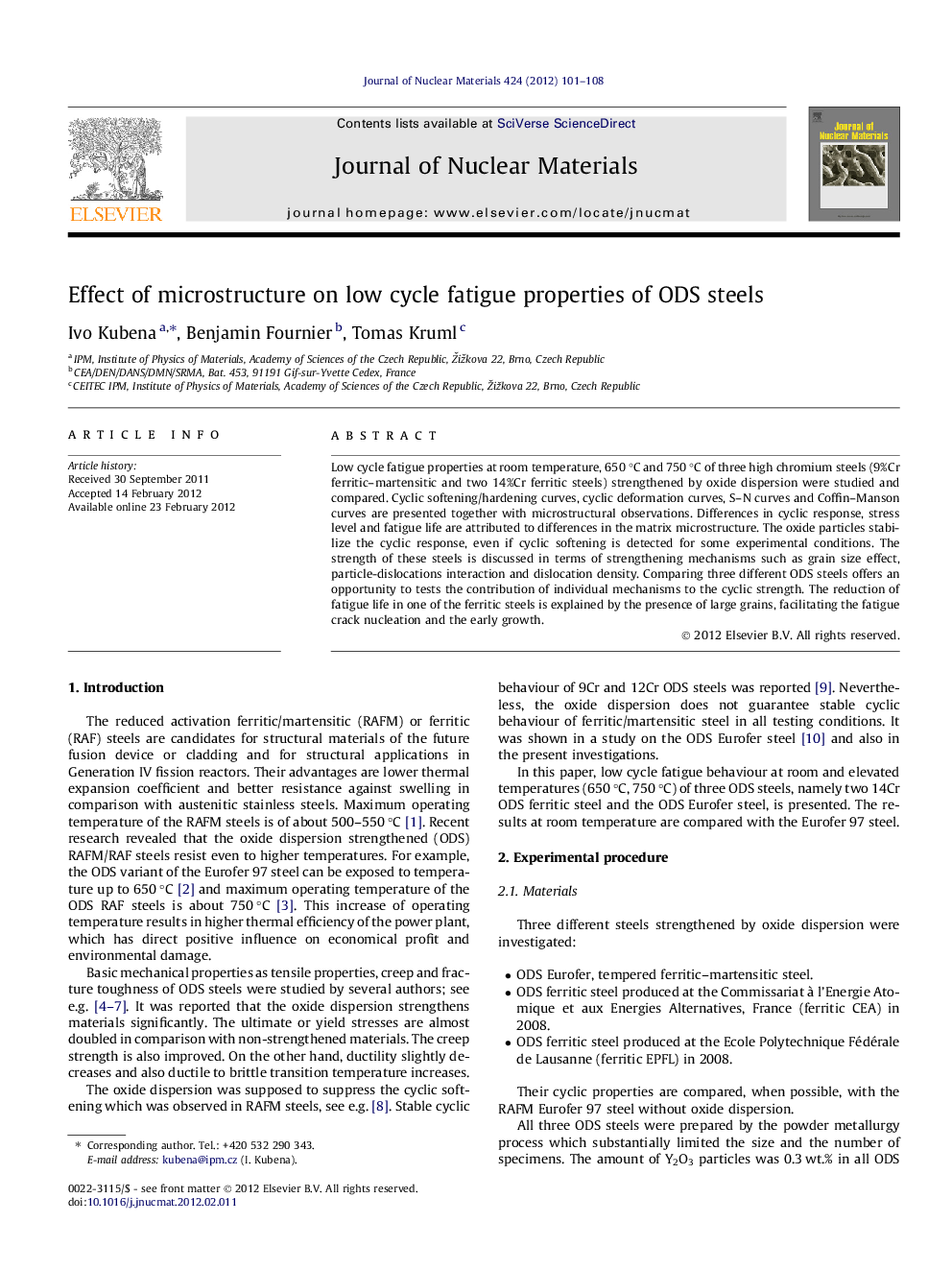| Article ID | Journal | Published Year | Pages | File Type |
|---|---|---|---|---|
| 1566172 | Journal of Nuclear Materials | 2012 | 8 Pages |
Low cycle fatigue properties at room temperature, 650 °C and 750 °C of three high chromium steels (9%Cr ferritic–martensitic and two 14%Cr ferritic steels) strengthened by oxide dispersion were studied and compared. Cyclic softening/hardening curves, cyclic deformation curves, S–N curves and Coffin–Manson curves are presented together with microstructural observations. Differences in cyclic response, stress level and fatigue life are attributed to differences in the matrix microstructure. The oxide particles stabilize the cyclic response, even if cyclic softening is detected for some experimental conditions. The strength of these steels is discussed in terms of strengthening mechanisms such as grain size effect, particle-dislocations interaction and dislocation density. Comparing three different ODS steels offers an opportunity to tests the contribution of individual mechanisms to the cyclic strength. The reduction of fatigue life in one of the ferritic steels is explained by the presence of large grains, facilitating the fatigue crack nucleation and the early growth.
► Three various ODS steels are studied and compared. ► Low cycle fatigue data at RT, 650 °C and 750 °C are given. ► Microstructural characterization. ► Detailed discussion of strengthening mechanisms.
